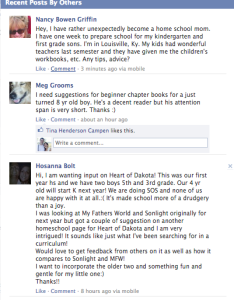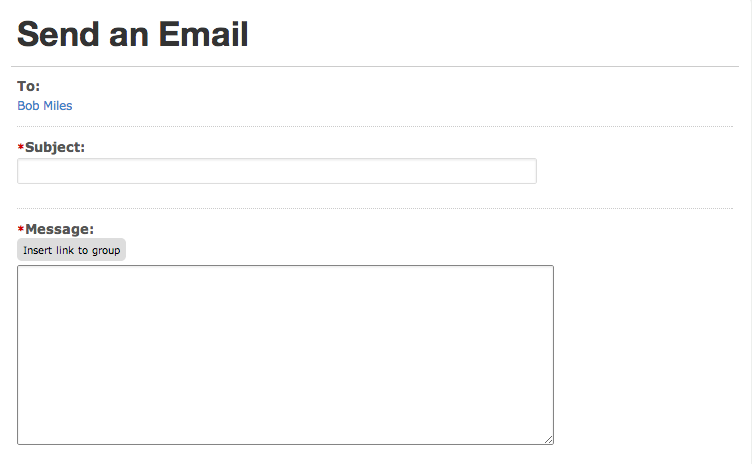Simple Ways to Find Potential Customers Online
I’m a big fan of learning everything I can about Customer Development – it’s fascinating to see the progression from an idea to a viable business. Authors like Steve Blank, Ash Maurya, and Eric Ries each have valuable insight, but in the early stages of an idea, it’s tough to get started.
Who do we start talking to? Do we try to sell a potential customer on the first interaction? These are a few of the questions I’ve had.
I’ve compiled some of the things I’ve learned – the hope is that these methods and techniques are so easy that it’s nearly impossible to drag your feet!
Google Adwords Keyword Tool
I believe the first step of customer development is to learn the language of your customers. Obviously this learning can happen during interviews with potential customers, but why not learn it first and increase your chances of building trust? A simple way to find out specific keywords is to use the Google Adwords Keyword tool. In short, it’s a way to measure search queries in volume – let’s look at an example:
This may not be the best example, but let’s say an insurance startup was looking to market “auto insurance” all over their website and in print materials. Let’s see if they are reaching the majority of potential customers. (P.S. – data is not 100% accurate)
It turns out, the majority of people are looking for “car insurance.” The lesson here is that you never know what your customers are looking for, so learn how to speak the language.
Other ways to learn how to speak the language:
- Read related Books
- Follow popular industry blogs
- Browse Forums and LinkedIn Groups (see what people are talking about and HOW they are communicating)
- Attend Meetups or Conferences ($$)
Manually “Scrape” Facebook Pages
The great part about social media is that it enables individuals to connect…..and you to easily find potential customers. Marketing research has never been easier.
In my opinion, the goldmine is what people post on fan pages. For example, let’s say I was looking to create a product centered around Homeschooling. Let’s see what we can find.
Below are a few screenshots from Homeschool fan pages (with over 20,000 people connected..lots of potential customers)
First take notice – if you don’t understand the language and the industry, some of these questions/comments won’t make sense! Next, these individuals are asking questions, mostly about what curriculum to use. They need recommendations and are looking for the best option for their children. Potential product idea?
**Next Steps: **
- Consider Facebook messaging these individuals w/ questions or answers to their questions (sometimes these messages will get stuck in the “other” folder in the Facebook inbox if you aren’t friends with them)
- “Stalk” their profiles and find out what other pages they like. What are they interested in?
- Watch Noah Kagan do it
Search Twitter with Followerwonk
Followerwonk is awesome. It’s a simple, easy way to segment followers according to a specific keyword. I typed in “homeschool” and within a few seconds, I have a list of some of the most influential people in the homeschooling community. Cool! Let’s reach out to these extremely busy people who have no time to talk to you…..
Stop.
It’s important to start small. If you want to be @mentioned by a power user on Twitter, don’t reach out to them during customer development. Instead start building your snowball on a small scale – once the snowball gets rolling, it just keeps getting bigger. Inertia is a powerful thing.
Also, you haven’t figured out a message that resonates with potential customers – reaching out to a popular blog is futile right now.
App Reviews
A friend of mine has a great post on using the Chrome Store & Google+ profiles to find early evangelists. You should read it!
In short, you can use the Chrome extension store to find customers. Oftentimes reviews are connecting directly to Google+ profiles, which means it makes it extremely easy to reach out.
Note – I’m not sure if this technique works on the Google Play store.
Localize Customer Development w/ Meetup
If you are looking for people in your area to speak to, consider joining a local Meetup group. You can also reach out to individuals – there’s the ability to email through their profile page. Also, if you can meet with these people, it’s the perfect opportunity to generate feedback and insight. Just don’t abuse it.
Sending the Email/Message
The most important part when emailing potential customers is to be honest and personable. Seek to solve the major pain point that they experience – an easy way to find this out is by asking something like this:
“If you had a magic wand, what would you change about _________________ ?”
Refrain from leading your customers to a solution that you think will work.
I once asked a potential customer if they were using any software to help with a specific task. Their response was “Safari” – definitely not the response I was expecting. It just shows how important it is to make the questions simple, and get to the heart of the issue.
If you are looking to collect and organize responses, use Google Forms. If you want the “raw answers” just ask them directly in the email.
Other Tips:
Consider A/B testing your email copy, and include links to different landing pages. Supplement this approach with SnapEngage, and chat directly with website visitors.
Parting Advice
Treat people the way you want to be treated. Don’t abuse these techniques.



